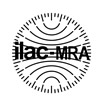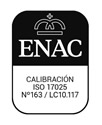Scientists from across the world have signed a petition requesting the World Health Organization (WHO) to take action on indoor air quality in public buildings to help to prevent the spread of COVID-19.
As SARS-CoV2 continues to put pressure on health systems all over the world and the economy, the scientist community calls on the WHO to review the research that shows an indoor humidity level of between the 40% -60% relative humidity (RH) is the optimal level for inhibiting the spread of seasonal respiratory illnesses and their burden on society.
The WHO has set guidance for indoor air quality on issues such as pollution and mold. The group say “if it were to publish guidance on minimum levels of humidity, building standards regulators around the world would need to update their or requirements. Building owners and operators would then take steps to improve their indoor air quality to meet this minimum humidity level”

What would the regulation on indoor air quality mean?
The regulation on indoor air quality would lead to:
- Respiratory infections from seasonal respiratory viruses, such as flu, would be significantly reduced.
- Lives saved from the reduction in seasonal respiratory illnesses.
- Global healthcare services being less burdened every winter season.
- The world’s economies massively benefiting from less absenteeism.
- A healthier indoor environment in public buildings and improved health for millions of people.
The importance of IAQ in the COVID-19 era
The containment of the coronavirus pandemic is requiring a worldwide lockdown. While this is extremely effective in reducing outdoor contagion, it does not prevent indoor transmission of SARS-CoV-2.
It is scientifically proved that the proper control of indoor humidity levels drastically reduces the half-life of viruses and may even enhance the mucosal innate-immunity defenses against them.
The monitoring of relative humidity reduces the risk of microbial spread in hospitals and other buildings at low-cost and without causing negative effects. Indoor air quality devices as Nanoenvi IAQ can also be easily implemented in public buildings and in both private and workplace environments.
Nanoenvi IAQ is a powerful device that can teach users how to adopt new habits to create healthier indoor air quality. If the IAQ has been always important, in the COVID-19 era it is even more. If you are interested in it, join Nanoenvi’s early-access partner program and contact us here.











